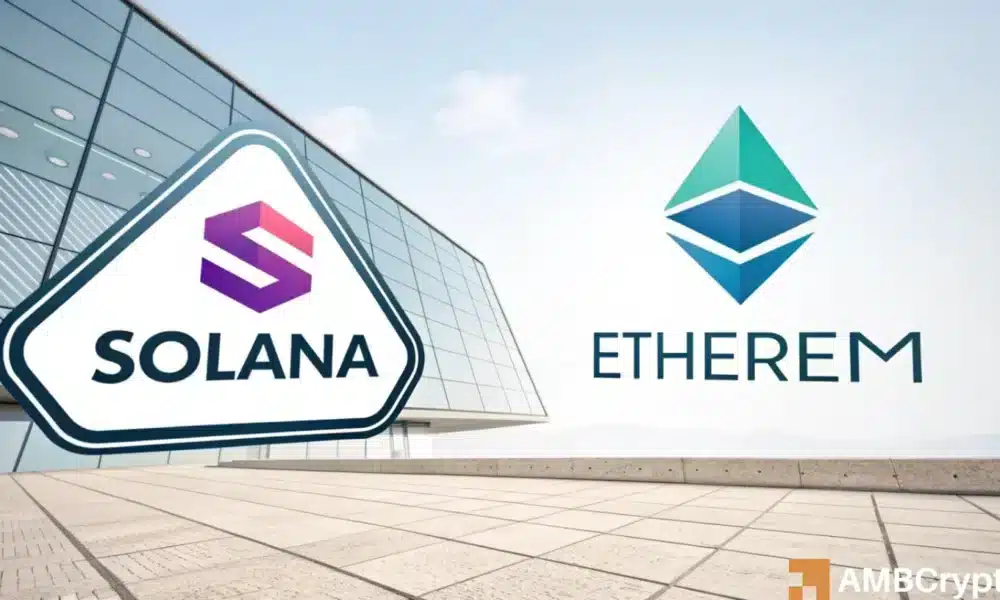The competition between Ethereum [ETH] and Solana [SOL], the top two cryptocurrencies, continues to be a significant focus in the changing landscape of digital assets.
Emphasizing this ongoing rivalry, Fidelity Digital Assets, a segment of Fidelity Investments, recently released a publication named “Looking Ahead to 2025: Is it Too Late to Enter the World of Digital Assets?”
Ethereum vs. Solana
The document, written by Max Wadington, extensively examined ETH’s potential through its “Ethereum Perspective” segment, analyzing crucial indicators, expected enhancements, and their possible implications for investors as the cryptocurrency market moves towards 2025.
This review brings to light the factors influencing the competition between these two prominent blockchain platforms.
In his evaluation, Wadington expressed that,
“We believe that fundamental factors are crucial for investors with a long-term outlook. In this regard, Ethereum exhibits strong developer engagement, total value locked (TVL), and stablecoin supply.”
He further stated that,
“In comparison, Solana’s earnings and TVL display an accelerating growth rate when compared to Ethereum and have garnered significant attention from the community in the past year.”
Nevertheless, Solana’s revenue model, primarily influenced by memecoin trading, showcases a cyclical pattern. It performs well during bullish phases but tends to retreat considerably in bearish market conditions.
Similarly, Ethereum features Uniswap as a significant use case fueled by speculative trading activities.
Despite this, Ethereum’s fundamental strengths appear to rely less on speculation, potentially offering enhanced stability over the long run.
While these foundational aspects offer insights for investors with long-term strategies, they might not necessarily dictate which platform could outshine the other in the short term.
Why? Because short-term price movements often rely on the prevailing narratives in the market.
Ethereum vs. Solana Enhancements
Looking towards 2025, Solana’s Firedancer upgrade is anticipated to generate substantial excitement within its community by promising a notable increase in transactions per second (TPS).
This advancement could bolster SOL’s appeal and draw more interest from potential investors.
Contrastingly, Ethereum’s Prague/Electra upgrade, while pivotal for enhancing the platform’s unique security features, is less likely to create a similar level of enthusiasm as it does not have a direct impact on Ether’s value proposition.
However, Ethereum maintains a competitive advantage through its availability via exchange-traded products (ETPs), a factor that could remain crucial depending on regulatory advancements.
Solana Takes Center Stage
Despite recent price declines in both cryptocurrencies, Solana continues to outshine its rivals in certain primary indicators, solidifying its position as a dominant presence in the speculative market.
On the 6th and 7th of January, Solana’s Decentralized Exchange (DEX) volume surpassed that of Ethereum and Base combined, reaching a notable $3.98 billion compared to ETH’s $1.7 billion and Base’s $1.2 billion.
This showcased a lead of over $1 billion in trading volume, underscoring SOL’s robust network activity and its attractiveness in speculative markets like memecoins and AI-related assets.

